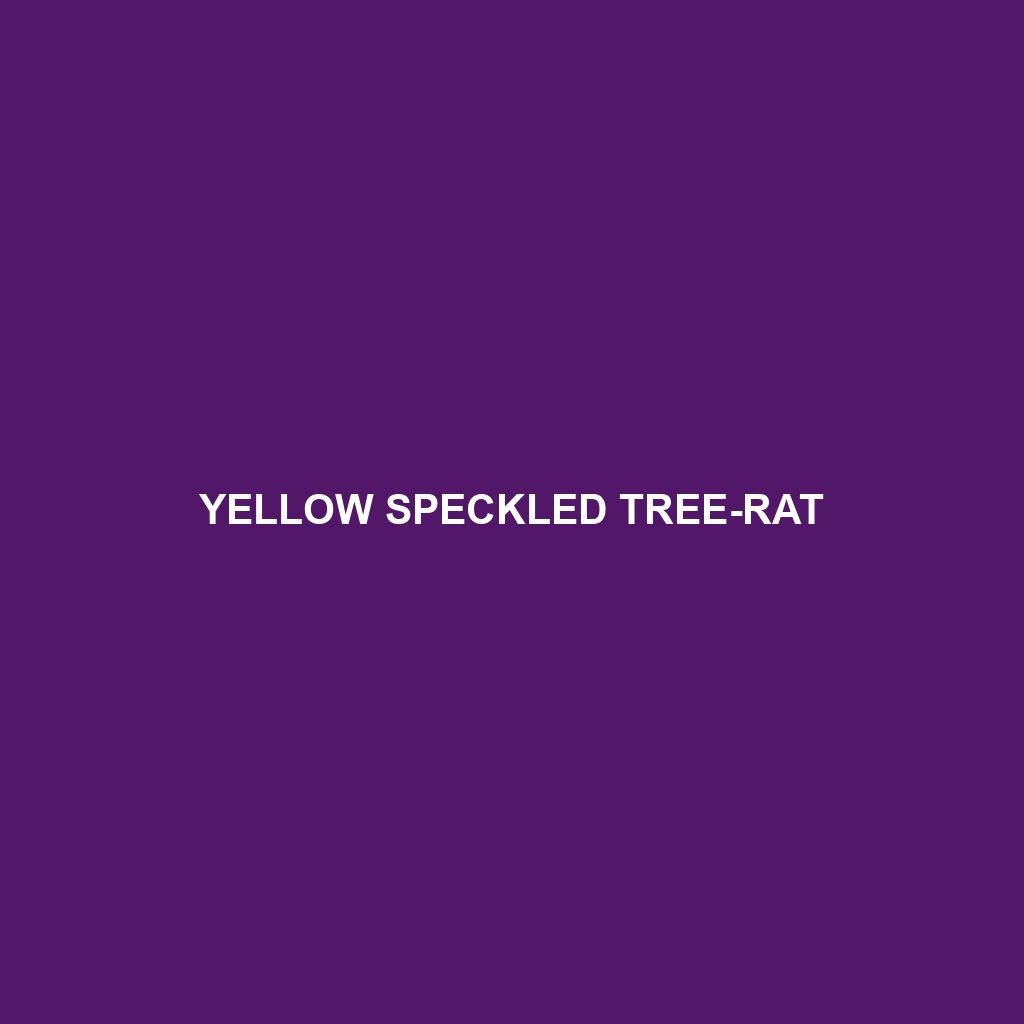Yellow Speckled Tree-rat
Common Name: Yellow Speckled Tree-rat
Scientific Name:
Habitat
The Yellow Speckled Tree-rat is primarily found in the rainforest regions of Central and South America, particularly in countries such as Colombia, Ecuador, and Brazil. This species thrives in humid tropical environments, preferring dense foliage and high canopies where it can easily maneuver among the branches. These habitats provide both shelter and access to food sources, making them crucial for the Yellow Speckled Tree-rat’s survival.
Physical Characteristics
The Yellow Speckled Tree-rat is a medium-sized rodent, typically measuring between 30 to 40 centimeters in length, including a long, bushy tail. Its fur is predominantly brown with distinctive yellow speckles, which serve as camouflage against the dappled sunlight filtering through the tree canopy. The rat has sharp claws, allowing it to grasp and climb trees with agility. Its large, expressive eyes enhance its night vision, enabling foraging during twilight hours.
Behavior
This species is primarily nocturnal, exhibiting heightened activity levels during the night. The Yellow Speckled Tree-rat is known for its social behavior, often seen in small groups. They communicate through various vocalizations and scent markings. Their agility in climbing and leaping from branch to branch is noteworthy, as they are adept at escaping predators. While they are generally shy, they can be curious and will investigate new objects in their environment.
Diet
The Yellow Speckled Tree-rat primarily feeds on fruits, leaves, and nuts, with a particular preference for seeds. Its herbivorous diet plays a critical role in seed dispersal, adding to the ecological balance of its habitat. Occasionally, they may also consume insects and other small invertebrates, showcasing their adaptability in foraging for food.
Reproduction
Breeding in Yellow Speckled Tree-rats typically occurs during the wet season, which provides ample food resources for raising young. The gestation period lasts about 30 to 35 days, after which the female gives birth to 2 to 4 offspring. These young are weaned at around 4 weeks and start to venture out on their own shortly after. Parental care is a significant aspect of their reproductive habits, with mothers often staying close to their young until they become independent.
Conservation Status
The Yellow Speckled Tree-rat is currently listed as ‘Vulnerable’ due to habitat loss caused by deforestation and land conversion for agriculture. Conservation efforts are essential to preserve their habitats and ensure the survival of this unique species. Protecting their rainforest ecosystems will play a vital role in maintaining their populations.
Interesting Facts
– The Yellow Speckled Tree-rat is often confused with other species due to its similar appearance, but its unique yellow speckles differentiate it from others.
– They have a remarkable sense of smell, which helps them locate ripe fruit in the dense foliage.
Role in Ecosystem
As a key herbivore, the Yellow Speckled Tree-rat plays a vital role in its ecosystem by contributing to seed dispersal and maintaining plant diversity. Its dietary habits help control forest vegetation growth, ensuring a balanced environment. Additionally, this species serves as prey for various predators, making it an integral part of the food web within its habitat.
